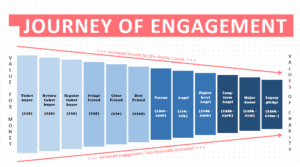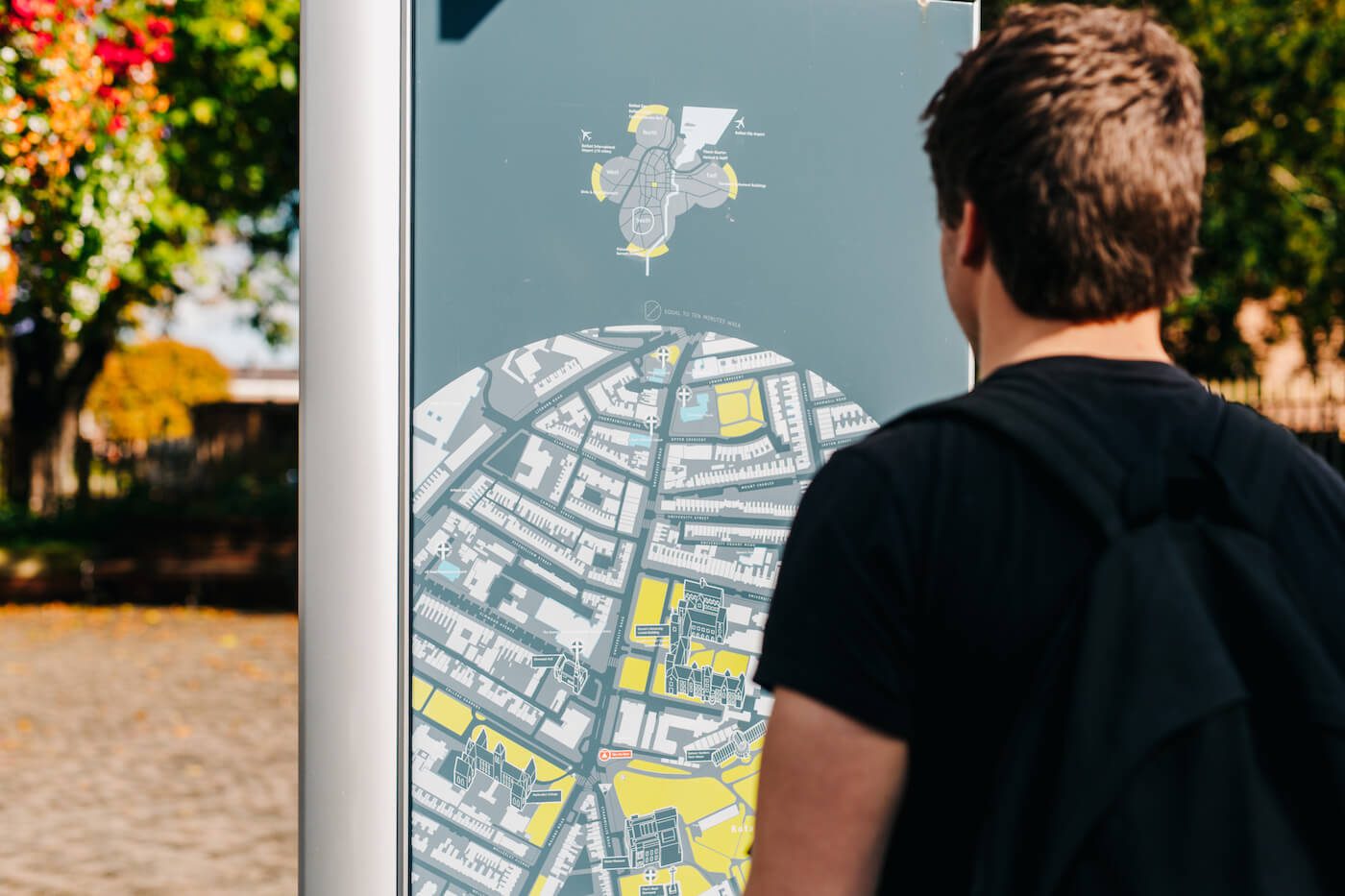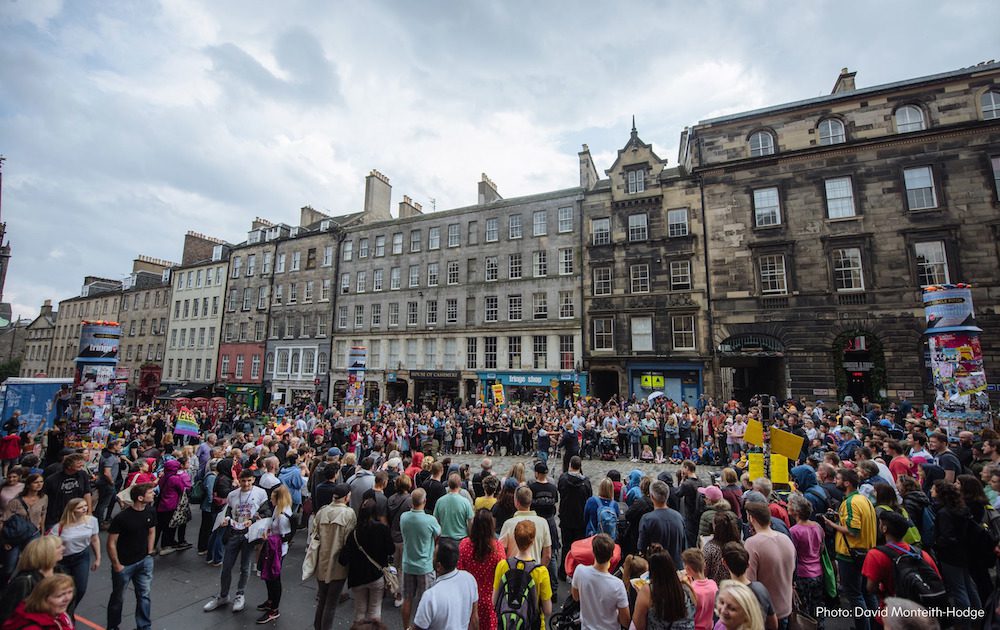Whether it’s strengthening your relationship with your audiences to make them returning visitors or reaching out to other new audiences with similar interests, knowing the people who come to your venue or event can open a lot of doors for your organisation. We’ve already touched on how you can find this information; we’ve also created the Analytics Series, but here we want to show you how this data can be used with a purpose, to support your goals.
We’ve had the privilege to have Olly Davies, Head of Marketing and Development at the Edinburgh Festival Fringe, as a guest at one of our Fourth Wall sessions last August. Olly talked about his own experience with using data and told us how the festival adjusted their aims and marketing strategy to create a successful membership scheme for their audiences.
Background of the Fringe
The festival has been around for more than 50 years, and has grown bigger and bigger over time. For years, their messaging focused on this growth talking about the fact that it was the largest arts festival in the world, and their marketing spend followed this message. They spent 80% of their marketing budget to secure new visitor acquisition, with impressive results. The festival now sells more tickets than any other major global event (aside from the Olympics) for over 4,000 shows. In 2019, that represented over 31,000 artists and more than 150 countries, all gathered in the city of Edinburgh.
But is bigger always better? The scale of the festival received much criticism from residents’ with negative media coverage pointing the finger at the impact of such large numbers flooding into the city at one point of the year.
So the challenge for the festival became how to reduce the impact while continuing to increase ticket sales?
The journey of engagement
To answer this question, the festival want back to their data to better understand the progression of the audience relationship with the festival.
They were able to work out that the audience journey looked like this:
- Audience member becomes aware of the Fringe for the first time.
- It tickled their interest and they start to browse shows.
- They find a show they like and buy a ticket.
- They attend the show.
- They enjoyed the experience so much that they buy another ticket for another show. They’re now returning visitors.
- They’ve attended a few Fringe shows now and would like to be a member. They join the Fringe friends for one year.
- After one year, they’ve seen the benefits of being a Fringe friend and want to become long-term donors to continue attending several shows every year but most importantly, to support the organisation and what it does.
They knew 1 to 4 were steps they were good at, but because the Fringe were so focused on selling tickets, they had neglected loyalty. They looked at their data and noticed return on investment was much higher for returning donors than for someone who buys a ticket once or twice. It wasn’t about getting bums on seats anymore but increasing their audiences’ loyalty.
On the back of this, they created the Fringe’s journey of engagement: as the value goes up, the number of people goes down, without impacting on income and level of engagement.

The Fringe’s journey of engagement from Olly Davies’ presentation.
What audience insights did they have?
Thanks to their ticketing system, Google Analytics, social media analytics and audience surveys, they knew that:
- 37% of their audiences struggled to pick a show to go and see. At the same time, 78% of their audiences came to the Fringe to see something they wouldn’t go see otherwise.
- Two thirds of their ticket buyers bought only one ticket.
- One third of their audience is from Edinburgh.
- 3 out of 10 already support other arts and culture charities.
Taking these insights into consideration, they reframed their message and their approach. They stopped talking about The Fringe being the largest festival in the world anymore but instead became the festival that welcomes everyone. Whether you are local or foreign and regardless of who you are, you are the person that makes the Fringe unique.
The Fringe’s new strategy
Instead of focusing on new visitor acquisition, they needed to turn their lens towards deepening engagement. They looked at the key parts of their journey of engagement and directed their attention on behaviours they wanted their audience to have. This is what they did:
- One more show, not two more feet: they wanted single ticket buyers to enjoy their experience, feedback on it and then, they encouraged them to book a second show.
- The Inspiration machine: they created an arcade machine placed all around the city to address the audience who struggled to find a show. It featured 10-seconds videos made by artists with their show’s main selling points.
- What content would you like to see? The online version of the inspiration machine offered two options: child-friendly and include all shows. Once the preferred option was selected, a spin of shows picked at random would appear, with short descriptions and buy ticket buttons.
Olly and his marketing team knew that people who favourited shows were 5 times more likely to buy tickets later on in the journey and that tickets were mostly purchased via the festival app. So early on, months before the festival, they encouraged people to download the app, bookmark shows they were interested in and opt in for update emails. On the app, audiences were sent regular reminders when tickets for a specific show were running low. It was then easy to track the conversion rate on Google Analytics.
Did it work? Yes it did! There was a 9% increase in ticket sales but only a 1% increase in ticket buyers.
How did they get their audience to buy a membership?
Showing their audience the impact the festival has on the community was at the core of their strategy. When you’re a member, it’s not only about tickets but also about the value your money brings to the charity and the activities it is involved in. For each amount, a short explanation is given of what it can buy. For example, a monthly £10 membership is enough to buy a Fringe day-out for someone from a disadvantaged area of Edinburgh. Starting small is the best way to build a path to bigger commitments in the long-term.
Their biggest challenge was to convince members to renew their membership at the end of the year. They only had one month to do so after the end of the festival and they knew there was a considerable drop-off in renewal for one-off credit card buyers. The retention rate for people who signed up with direct debit was much higher. The way they did it was not to ask their members for money but to link it back to the impact their contribution had made in the past year. They sent an email to their members reporting about BSL, autism backpacks and how the Fringe’s artists are getting direct financial support from the charity. One of the emails included a video featuring disabled artists who performed at the Fringe, to highlight how accessibility is important but also how the Fringe is for everyone and anybody can perform at it. The email ended with a simple survey link asking for their feedback. It was the perfect opportunity for them to collect more information about these members, what shows they went to, what they liked and what they didn’t like. This information would help them to target them better when asking them to renew their membership.
Our tips
- Every step you take must reflect your purpose. The Fringe’s message is that it is for everyone, audiences and performers alike. You can feel this message through their programme, their ticketing strategy, their marketing and communications as well as their membership scheme.
- Your audiences’ loyalty is more important than getting bums on seats. You want your visitors to be returning customers.
- You don’t have to wait to have tickets on sale to reach out to your audience. There are so many things you can talk to them about – ask them how they are doing, tell them how you miss them and how their support has an impact on you and your community.
- Knowing the time to make the right ask is key. Communicate with your audience when you know they’ll engage.
Photo by David Monteith-Hodge
Contact us
We’re called thrive for a reason. Let us know how we can best support you – drop us a line any time.

Search our website
Search for free reports, toolkits, audience development tips and more









